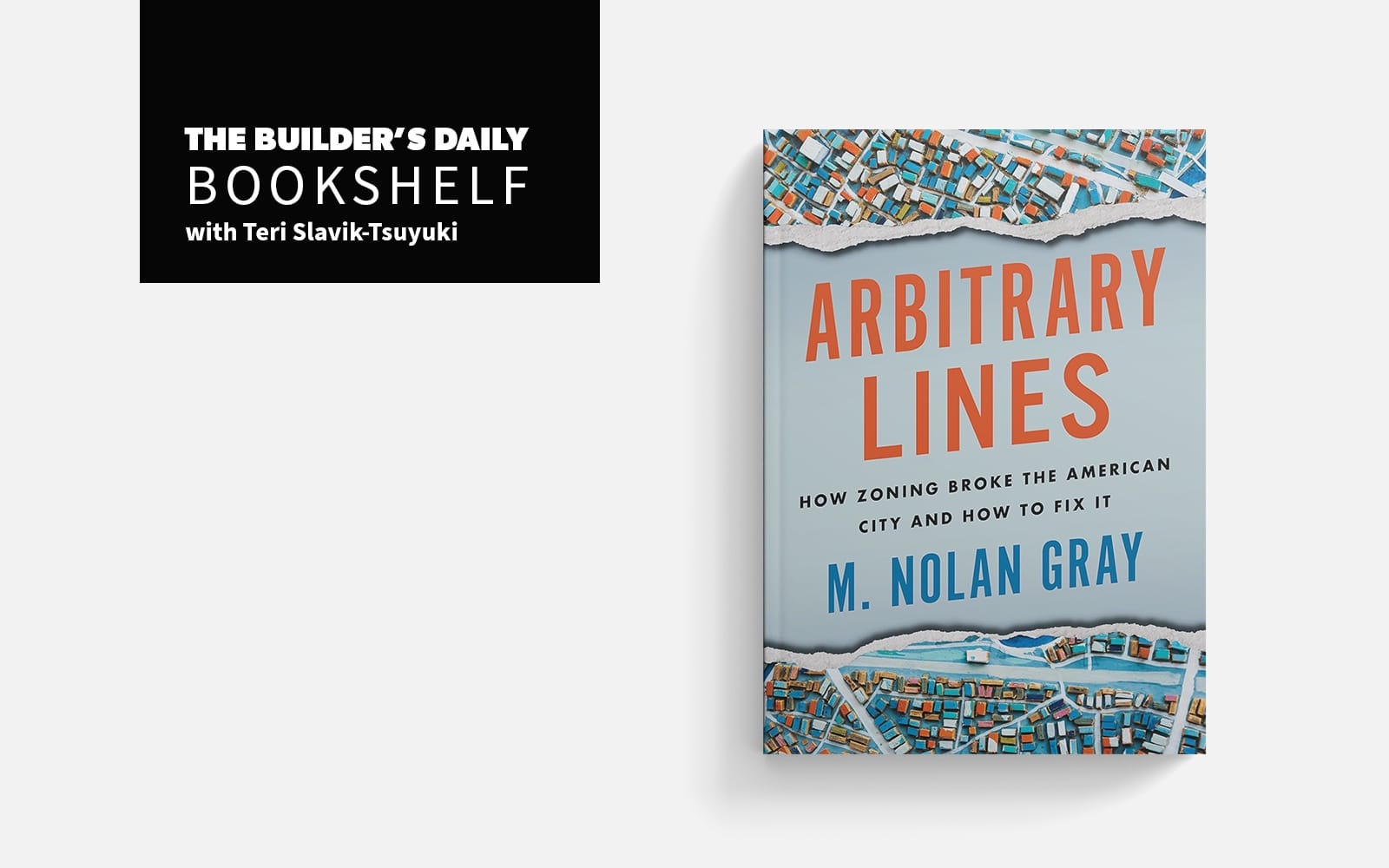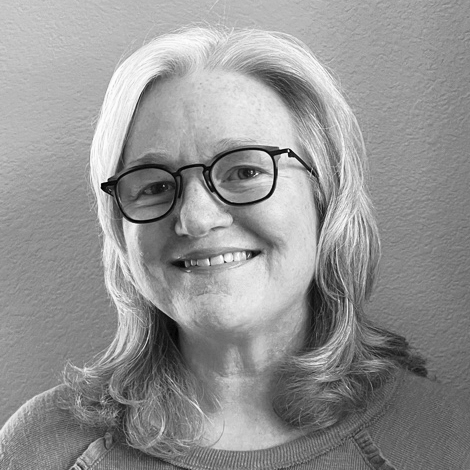Policy
Digging Into A Plan For Zoning, With Author Nolan Gray
A look at how the next generation of housing needs to look different and the way we think about zoning can help with that shift.

Welcome to The Builder’s Daily Bookshelf, a hand-picked reading list with reviews of inspiring books and author interviews about the business of housing and community development shared by TBD contributor, Teri Slavik-Tsuyuki.
As a professional city planner, an expert in urban land-use, and the research director for California YIMBY, Nolan Gray knows zoning, which is at least partly to blame for the concurrent crises of housing, unaffordability, lack of economic opportunity, racial and economic segregation, and unsustainable growth patterns. His book, Arbitrary Lines: How Zoning Broke the American City and How To Fix It, reads like a conversation with someone who really cares about helping people see zoning and planning not as dry, inaccessible concepts, but as tools for creating better places. It’s a solution-oriented and motivating book.
Zoning 101
Gray starts by explaining, in an accessible way, what zoning is and where zoning comes from in language agreeable to anybody regardless of their views on the topic. He also shares some humorous stories from his time spent answering calls on the zoning help desk in New York City as a young planner.
He continues by outlining some of the ways that zoning is being reformed, with incremental fixes that are being implemented across the country to make zoning less harmful.
Gray’s focus then shifts to what it would look like to move on from the country’s current system of land use planning, which he says has failed. He suggests the system be rebuilt.
Gray notes three ways zoning currently increases housing costs:
- By blocking new housing altogether.
- By forcing housing that is built to be of higher quality than residents might otherwise want—for example, minimum lot sizes force larger homes—and including minimum parking requirements.
- By adding an onerous, unpredictable layer of review to the permitting process, which tacks on costs before construction even begins. Every developer I know can relate to this.
Essentially, zoning controls what doesn’t get built, and Gray hopes to move the conversation away from these rigid, outdated models to a planning approach where neighborhoods and cities function and evolve as the ecosystems they are. He explains,
We have this idea that we need to do everything we can to preserve our neighborhood character. And what we do is we lock all our buildings in amber and we make it so none of our buildings can change. But when the buildings can't change, the demographics of the community will change. And if you have a system where neighborhoods can’t grow and add additional housing typologies at a range of incomes or have new commercial uses, you get stagnation and decline as these neighborhoods become increasingly exclusive.”
Allow For Growth
Humans are planners, planning things like streets, sewers, stormwater infrastructure, parks, and open spaces. But what’s been happening for the past 100 years (in the book Gray posits why this started when it did) is something very different. He explains:
For every single parcel in every single city, we identify the permitted land uses and the densities at which you're allowed to build. That is a radical project. It's a completely new project and, as I argue in the book, it's failed to address what people want out of land use planning.”
The book is not an argument against planning. There are important considerations that need to be made, like keeping certain incompatible land uses separate or ensuring infrastructure investment is commensurate with growth. But, Gray argues, zoning has been very ineffective.
We can do a better job of regulating specific impacts that bother people—things like light noise, traffic generation—or do a better job of coordinating our infrastructure with development,” he says. “This is a real problem you should solve by making investments that allow for the growth that's going to be happening either way.”
Much of the discussion about what gets built—and how zoning gets used to stop it—often comes down to power and politics, but it’s time to look more broadly at larger groups of people who are the future.
Local leadership needs to think beyond the person who shows up at city planning commission meetings and flies their NIMBY flag,” Gray says. “The people who are coming to these hearings and monopolizing conversations around planning and zoning tend to be wealthier. They tend to be homeowners; they tend to be older. And what you might be missing is the majority of your community where you have service workers struggling to make rent or retirees who are not able to downsize and stay in their community, or young professionals who no longer have a path to homeownership in the town they grew up in. Those are the people who don't show up at those hearings, and those people are actually fully bought in to reform.”
Many city and planning officials need to see these ideas in practice. Gray has a way to provide this, by showing what’s already built. When making the case for some of these reforms, he says:
I take people to one of these beautiful pre-zoning neighborhoods that already exist in cities all across the country, and point out, ‘Look, this neighborhood that's generally one of the most desirable neighborhoods in the city, it would be illegal to build this today. It would be illegal to make some of our unpleasant post-war suburbs more like this neighborhood. Isn't that crazy?’”
What he means by a pre-zoning neighborhood is one that most U.S. cities have, which includes a mixture of housing types. Townhouses next to duplexes, next to mansions, next to small lot single-family homes, and then a corner grocery, barbershop, or doctor’s office. I’m familiar with this as I grew up down the street from Tom’s Grocery, which was on a corner lot and the family that owned it lived upstairs. It was a safe, fun space to hang out with friends. Tom knew us all.
The Next Generation
In practice, developers and bankers need to have better dialogue and collaboration about consumer demand for more innovative missing middle housing. Developers who successfully remove or reduce parking requirements in a project and have strong buyer interest go to the bank for financing, and are often told by the banker that they’ve never seen a project like that and won’t finance it.
I would appreciate developers and financiers explaining to me how to move the ball because we regularly encounter this issue,” Gray notes. “The banks say, ‘I've never financed a fourplex. I don't know what this is or how to make sense of it.’ The next generation of housing is going to have to look different from what we've been building for the past 60, 70 years. And so, if you're committed to being the financial institution that supports the next generation of homeowners and supports the next generation of sustainable growth, you're going to have to change the type of projects that you're supporting. That's what we're all supposed to be doing—growing, and adapting and changing.”
A Call to Action for Developers
The silver lining of the present housing crisis is that a lot of local elected officials, commissioners, and planners are looking for solutions. Developers can and should play a bigger role in this process.
Gray sums up his final thoughts this way:
I think if developers are really thinking of their role as being long-term partners with the community, and building communities and neighborhoods in an incremental way, you have to be leaders to a certain extent on policy, and you have to be engaged with the conversations that are happening in your community and across the country. You have a wealth of expertise that is extremely valuable to people in your community who are working on these issues. Don't be afraid to get engaged, and definitely don't be afraid to be the first person to try out a new project.”
This powerful book suggests that while zoning reform itself is not sufficient — other things, like working with bankers, are necessary to support a range of housing types for all income levels — it is a solid first step to remove the arbitrary barriers to more attainable housing production.
MORE IN Policy
Outlier Effect: What Builders Can Do, Other Than Wait For A Rate Cut
Despite the odds, every operator is looking to bend their price barriers with every operational, design, and construction tactic they can employ in today's dodgy market.
A Leadership Moment Of Truth Comes With Rulings, Reactiveness
Industry and business community leaders must see beyond polarized agendas and transient business trends. Lasting profitability goes with an essential ride-along – brave and steadfast purpose.
Add To The Blueprint To Address Housing's Affordability Crisis
For each of the 10 barrier-lowering imperatives builders call on policymakers to adopt in this blueprint, there are operational, strategic, tactical, and business-cultural changes builders can and need to evolve to truly and accountably commit to "doing their part."
